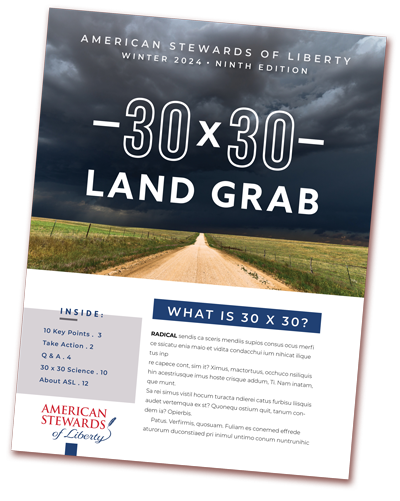On February 12, 2016, President Obama withdrew another 1.8 million acres for permanent protection under the Antiquities Act. He created three new National Monuments in California: the Mojave Trails National Monument, Sand to Snow National Monument, and the Castle Mountains National Monument. This brings the President’s current total acres of land withdrawn under the Antiquities Act to 265 million acres – more than any other President to date.
There are three key steps you need to take if you are impacted by a National Monument: (1) Know what the Proclamation Protects, (2) Update Local Land Use Plans, (3) Coordinate the development of the Monument Plan.
The Antiquities Act (16 USC 431), passed into law in 1906, gives the President the authority to withdraw by proclamation lands for historic and scientific interests. The Congressional intent of the Act was to give the President the power to protect objects of historic significance, such as the burial site of past Presidents. It was not for the purpose of withdrawing millions of acres with the stroke of a pen. In fact, the Act limits the President’s power by requiring that the area to be withdrawn is the “smallest area” necessary to protect the objects.
Section 2 of the Act provides the President’s authority:
“That the President of the United States is hereby authorized, in his discretion, to declare by public proclamation historic landmarks, historic and prehistoric structures, and other objects of historic or scientific interest that are situated upon the lands owned or controlled by the Government of the United States to be national monuments, and may reserve as a part thereof parcels of land, the limits of which in all cases shall be confined to the smallest area compatible with proper care and management of the objects to be protected: Provided, That when such objects are situated upon a tract covered by a bona fied unperfected claim or held in private ownership, the tract, or so much thereof as may be necessary for the proper care and management of the object, may be relinquished to the Government, and the Secretary of the Interior is hereby authorized to accept the relinquishment of such tracts in behalf of the Government of the United States.”
Once an area is withdrawn, there are several key things landowners and local governments need to do to ensure the continued use of the land, to the extent allowable under the new law.
- Understand what the Proclamation Protects and Restricts
The language of the Proclamation identifies the objects to be protected, the uses to be eliminated or restricted, and activities that are excluded from protection of the Monument. An example of this is the Grand Staircase-Escalante National Monument Proclamation, which has an exclusionary clause requiring livestock grazing to continue at the level of use when the Monument was created, managed by existing grazing laws and regulations. Landowners and local governments need to understand what the Proclamation does and does not protect, and not rely on the federal agencies interpretation.
- Update Local Land Use Plans
The Federal agency with management responsibility will need to prepare a management plan for the Monument. The development of this should be coordinated with the plans and policies of local governments. For this reason, it is critically important that the counties, cities, conservation districts and other special districts impacted by the Monument, update their natural resource plans and policies to acknowledge the creation of the Monument and set forth those activities that must continue in order for the local government to carry out its charge. Under coordination, the agency is charged with resolving the conflicts with local plans.
- Coordinate the Monument Plan
Local governments need to initiate coordination with the federal agency early in the process. It is critical that your local entities get involved in this process prior to the development of the Monument Plan and Environmental Impact Statement. It is never too early to begin advocating your position, and coordination is the only process that allows local governments to have this early input. This is where you publicly disclose the conflicts and advocate the needs on behalf of your local citizens. It is also the early opportunity for the agency to ensure the Monument plan is consistent with local land use plans.
ASL has been working with Kane and Garfield County in Utah on a plan amendment to the Grand Staircase-Escalante National Monument. We have also been working with a coalition of local governments in the Las Cruces, New Mexico area, spearheaded by the Dona Ana Soil and Water Conservation District on the Organ Mountains-Desert Peaks National Monument. Their use of the coordination process on these issues has already proven to be a game changer in their ability to protect the economy, people and way of life.
If you are impacted by a national monument, give us a call and we will help you work through these issues.






